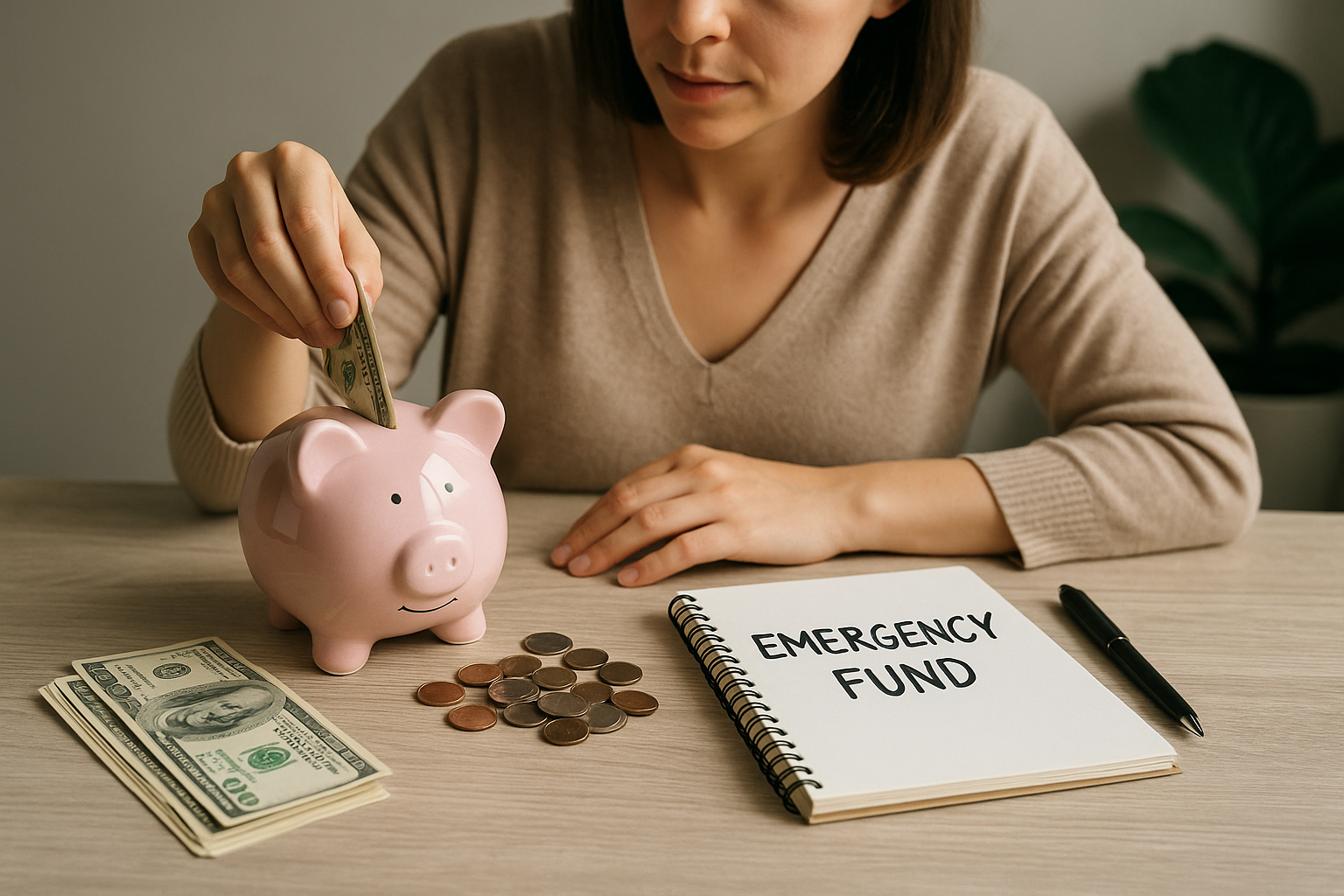An emergency fund is one of the most powerful financial tools you can have. It acts as a safety net, helping you handle unexpected expenses — like medical bills, car repairs, or sudden job loss — without going into debt. Yet many people don’t know where to start or feel overwhelmed by the idea of saving a large amount.
The good news? Building an emergency fund is entirely possible, even if you start small. This step-by-step guide will walk you through how to do it efficiently and realistically.
What Is an Emergency Fund?
An emergency fund is a stash of money set aside specifically for unplanned and urgent expenses. It’s not for vacations, shopping, or regular bills — it’s for true emergencies. Having one can:
- Prevent credit card debt
- Reduce financial stress
- Provide peace of mind
- Give you time to make thoughtful decisions in a crisis
Step 1: Set a Realistic Goal
Experts typically recommend saving 3 to 6 months of living expenses. But if that seems like too much, don’t worry — the most important thing is to start.
Here’s how to break it down:
- Beginner goal: $500–$1,000
- Next goal: 1 month of living expenses
- Long-term goal: 3–6 months of essential costs
Adjust your goal based on your lifestyle, job stability, and responsibilities.
Step 2: Know Your Monthly Essentials
To figure out how much to save, calculate your essential monthly expenses:
- Rent or mortgage
- Utilities (electricity, water, gas)
- Food
- Transportation
- Insurance
- Debt payments
- Basic healthcare
Add these up to estimate how much you’d need per month if your income suddenly stopped.
Step 3: Open a Separate Savings Account
Keep your emergency fund separate from your regular checking or savings account to avoid accidentally spending it.
Look for a high-yield savings account or an account with:
- No fees
- Easy access (but not too easy)
- Good interest rate
- FDIC or similar insurance
Avoid investing your emergency fund in risky assets — safety and liquidity are more important than returns here.
Step 4: Start Small and Be Consistent
You don’t have to save thousands overnight. Start with a small, manageable amount like $10, $25, or $50 per week.
Tips to grow it:
- Automate your savings (set up recurring transfers)
- Round up your purchases and transfer the change
- Allocate part of your tax refund or bonus
- Sell unused items and save the proceeds
Consistency over time builds momentum.
Step 5: Treat It Like a Non-Negotiable Bill
When you treat savings like any other essential bill, it becomes a regular part of your routine. Pay yourself first — before you spend on anything else.
Even when money is tight, prioritize adding something to your fund each month.
Step 6: Keep It for Emergencies Only
Don’t dip into your emergency fund for things like:
- Holiday gifts
- Concert tickets
- Home décor
- Routine car maintenance (budget separately)
Only use it for true emergencies — job loss, urgent medical care, major repairs.
If you do use it, prioritize rebuilding it as soon as possible.
Step 7: Celebrate Milestones
Saving money isn’t easy, especially when you’re starting from zero. Celebrate your progress!
For example:
- Reaching $500 — treat yourself to a budget-friendly reward
- Hitting 1 month of expenses — share your win with someone
- Reaching 3–6 months — review your financial plan and set new goals
Motivation grows when you recognize how far you’ve come.
Step 8: Reevaluate Annually
Your life changes — and so should your emergency fund. Once a year, revisit your savings:
- Have your expenses increased?
- Do you have new dependents?
- Did you change jobs or income level?
Adjust your target and savings plan accordingly.
Final Thoughts: Peace of Mind Has a Price — And It’s Worth It
An emergency fund isn’t just about money — it’s about security. Knowing you have a cushion to fall back on gives you freedom and confidence in tough times. Whether you’re saving $10 or $1,000, what matters is starting. Every small deposit is a step toward financial resilience.
